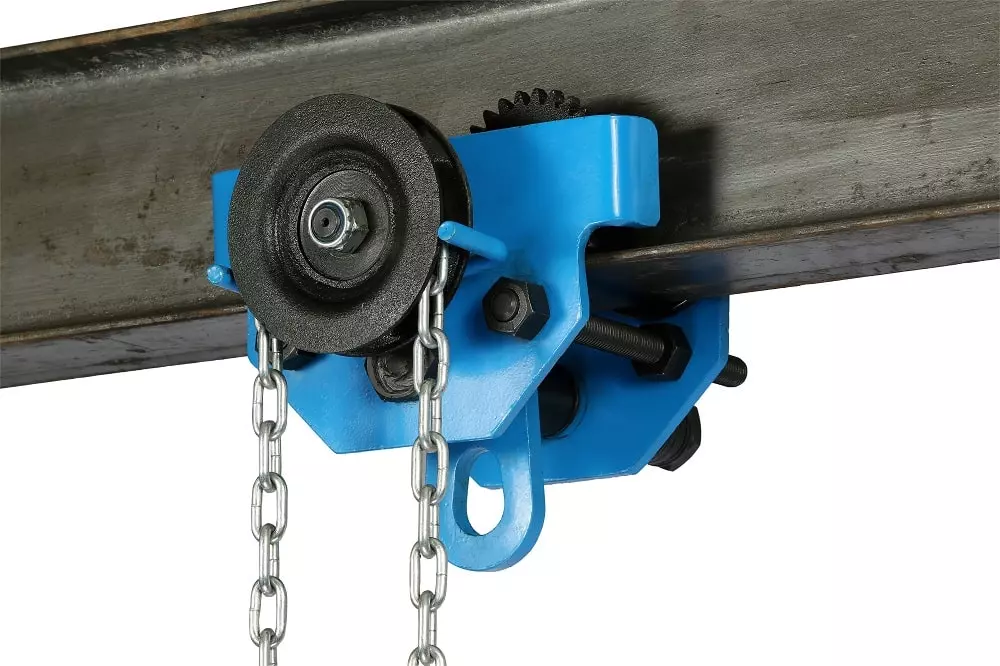A manual hoist, also known as a chain hoist or hand hoist, is a simple yet powerful mechanical device used for lifting, lowering, and positioning heavy loads. Unlike electric or pneumatic hoists, a manual hoist operates entirely by human effort, making it an ideal lifting solution for locations without a power supply or where precision and control are required.
How a Manual Hoist Works
The basic principle of a manual hoist is mechanical advantage. It uses a system of gears and chains to multiply the pulling force applied by the operator.
-
Hand Chain: The operator pulls this chain to rotate the gears inside the hoist.
-
Gear Mechanism: The internal gears multiply the applied force, allowing the user to lift heavy loads with minimal effort.
-
Load Chain: This chain connects to the lifting hook and directly carries the load.
-
Hooks: Both the top hook (for suspension) and the bottom hook (for lifting) are made of high-strength steel and include safety latches to prevent accidental release.
-
Brake System: A mechanical load brake ensures the lifted load stays in place even if the operator stops pulling.
This combination of chains, gears, and brakes makes manual hoists extremely reliable and safe for lifting heavy items.
Types of Manual Hoists
-
Chain Hoist (Hand Chain Hoist):
Operated by pulling a loop of hand chain to lift or lower the load. Common in workshops, factories, and construction sites. -
Lever Hoist (Ratchet Hoist):
Uses a lever handle and ratchet mechanism for precise lifting or tensioning, ideal for load securing, pulling, or positioning in tight spaces.
Advantages of Manual Hoists
-
No Power Required: Can be used anywhere, even in remote or outdoor environments.
-
Portability: Compact and lightweight design makes it easy to transport and install.
-
Cost-Effective: Less expensive than electric or hydraulic hoists.
-
Low Maintenance: Fewer mechanical components mean less wear and easier servicing.
-
Precise Control: Manual operation allows for slow and accurate lifting movements.
Applications of Manual Hoists
Manual hoists are versatile tools found in a wide range of industries:
-
Construction: Lifting building materials, steel beams, and scaffolding.
-
Warehousing: Loading and unloading goods or heavy equipment.
-
Manufacturing: Handling machinery parts, molds, and assemblies.
-
Shipyards and Mining: Moving heavy tools and equipment in harsh environments.
-
Automotive Repair: Lifting engines and vehicle components safely.
-
Maintenance and Installation: Ideal for confined or elevated workspaces.
Safety Tips for Using a Manual Hoist
To ensure safe operation and prevent accidents:
-
Inspect the hoist and chains before each use.
-
Never exceed the rated load capacity.
-
Keep the load balanced and properly secured.
-
Avoid twisting or side-loading the hoist.
-
Operate the hoist smoothly—no jerking or sudden movements.
-
Regularly lubricate and maintain the hoist according to manufacturer instructions.
Conclusion
A manual hoist is a practical, durable, and cost-efficient lifting device that plays an essential role in industrial and mechanical operations. Whether used in workshops, construction sites, or remote locations, it offers unmatched reliability and control for lifting heavy loads without the need for electricity.
With proper usage and maintenance, a manual hoist can deliver years of safe and efficient performance.


